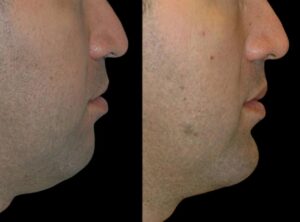
Introduction
From chalkboards to smartboards, and textbooks to tablets, education has constantly evolved with the advancement of technology. Today, a new player is transforming how students engage with learning — wearable technology. These smart devices are not just stylish; they’re intelligent tools reshaping the dynamics of classrooms, enhancing interaction, and personalizing the student experience.
As we step further into a digitized age, the fusion of wearable tech with education promises a future where learning is more accessible, engaging, and tailored to individual needs. Whether it’s a smartwatch that tracks focus levels or AR glasses that bring historical events to life, wearable tech is redefining what’s possible in both physical and virtual classrooms.
What Is Wearable Tech and How Does It Fit into Education?
Wearable tech refers to electronic devices worn on the body that often connect with other smart systems to collect data or perform specific tasks. Popular examples include smartwatches, fitness trackers, augmented reality (AR) glasses, and even smart clothing.
In an educational context, these devices serve various purposes:
-
Monitoring student health and activity levels
-
Enhancing concentration through biofeedback
-
Delivering immersive content through AR/VR
-
Facilitating better communication between students and teachers
This integration allows educators to make real-time adjustments based on student performance, while learners benefit from personalized instruction and a more interactive experience.
Top Examples of Wearable Tech in the Classroom
Let’s explore some of the most impactful wearable devices making their way into schools and universities:
1. Smartwatches
These devices go beyond tracking time. Many now include features like:
-
Heart rate monitoring to manage stress
-
Reminders for class schedules and assignments
-
Apps that help students manage time more effectively
2. AR and VR Glasses
Augmented and virtual reality wearables immerse students in simulated environments. For example:
-
Medical students can practice surgery with VR tools
-
History lessons can turn into interactive museum tours
-
Geography classes can explore remote parts of the world
3. Fitness Trackers
Physical education is also getting a tech boost. Fitness bands monitor activity, sleep, and even hydration, helping schools implement health programs and encourage well-being among students.
4. Smart Clothing and EEG Headbands
Some schools have begun experimenting with clothing embedded with sensors that measure movement or brain activity. EEG headbands, for instance, can track focus and provide feedback to improve concentration techniques.
Benefits of Wearable Tech in Education
Wearable tech offers a range of benefits that support both students and educators in meaningful ways:
Personalized Learning
Wearables help identify how each student learns best — whether through visual cues, movement, or sound. Devices can adjust content or offer feedback based on real-time performance.
Improved Engagement
Interactive content and gamified learning experiences capture students’ attention more effectively than traditional lectures. This fosters curiosity and makes learning enjoyable.
Enhanced Communication
Teachers can use wearable devices to send reminders, share resources, or monitor participation. For students with learning differences or language barriers, this can be a vital bridge.
Health and Well-Being
Tracking stress, fatigue, and activity helps schools address mental and physical health proactively. It also allows students to build better self-care habits.
Challenges and Concerns
Despite the promise, wearable tech in education comes with its share of concerns:
Privacy and Data Security
Collecting biometric and behavioral data raises important questions. Schools must ensure strong data protection policies to guard student privacy.
Cost and Accessibility
Not all institutions can afford to provide or maintain wearable devices for every student. This could widen the digital divide if not addressed properly.
Overreliance on Technology
There’s a risk that educators may depend too much on data and tech-based instruction, neglecting the human connection and emotional intelligence that define good teaching.
How Educators Are Adapting
Forward-thinking schools are not just adopting wearable tech — they’re designing entire curricula around it. Teachers are being trained to interpret data insights, create interactive lessons, and support diverse learning styles through these tools.
Pilot programs are testing wearable tech in real classrooms, measuring everything from student stress during exams to their attention span during different subjects. The goal is not to replace teachers, but to empower them with better tools for decision-making and student support.
Collaborations with tech firms, like those offering solutions through platforms such as inktwists are helping institutions stay updated with the latest innovations in educational wearables.
The Future of Wearable Tech in Learning
As AI continues to integrate with wearable tech, we may see even smarter systems capable of predicting academic struggles before they happen. Imagine a device that alerts a teacher when a student is losing focus or emotionally distressed — before it reflects in grades or behavior.
Future classrooms might also include biometric-based learning paths, where a student’s stress levels, sleep patterns, or focus zones determine the best time or format for learning new concepts.
As 5G and IoT technologies expand, wearables will be able to deliver data in real time, making remote learning more responsive and effective than ever before.
Conclusion
Wearable tech is not just a passing trend — it’s a transformative force in education. From increasing engagement to providing deep insights into student performance and well-being, these devices are redefining what it means to teach and learn in the 21st century.
Still, like any powerful tool, their success lies in thoughtful, ethical, and inclusive implementation. Educators, policymakers, and developers must work together to ensure wearable tech becomes a bridge to better learning — not a barrier.
With the right approach, the future of education looks more interactive, informed, and inspiring than ever before.







